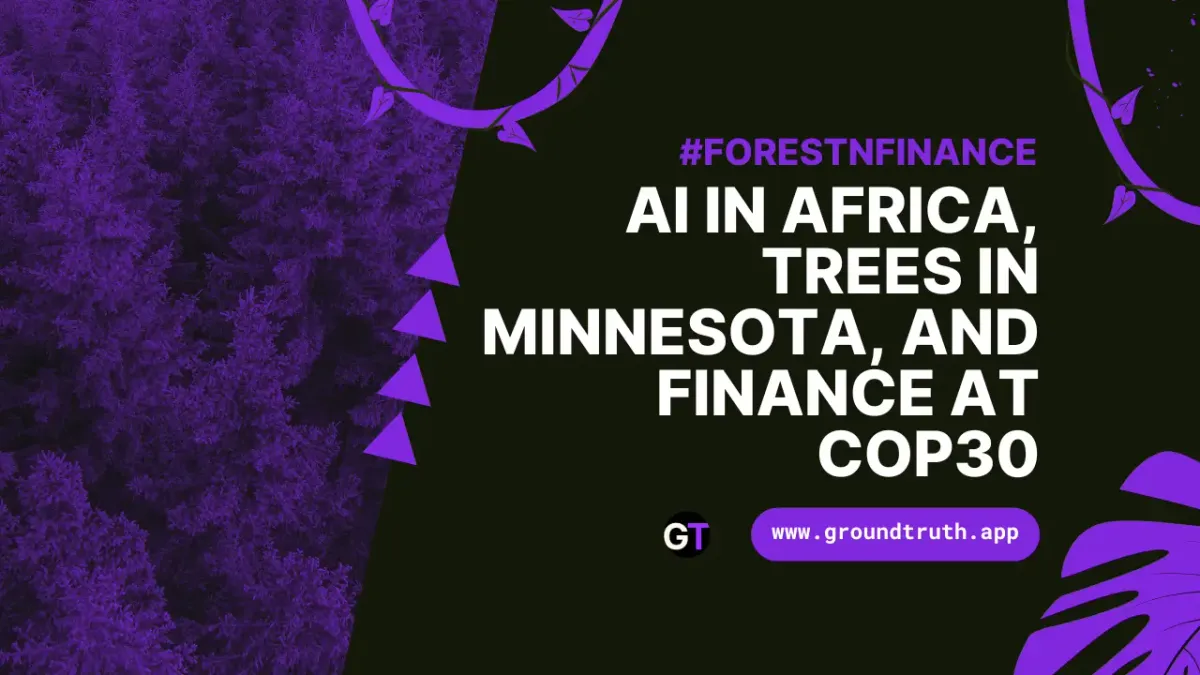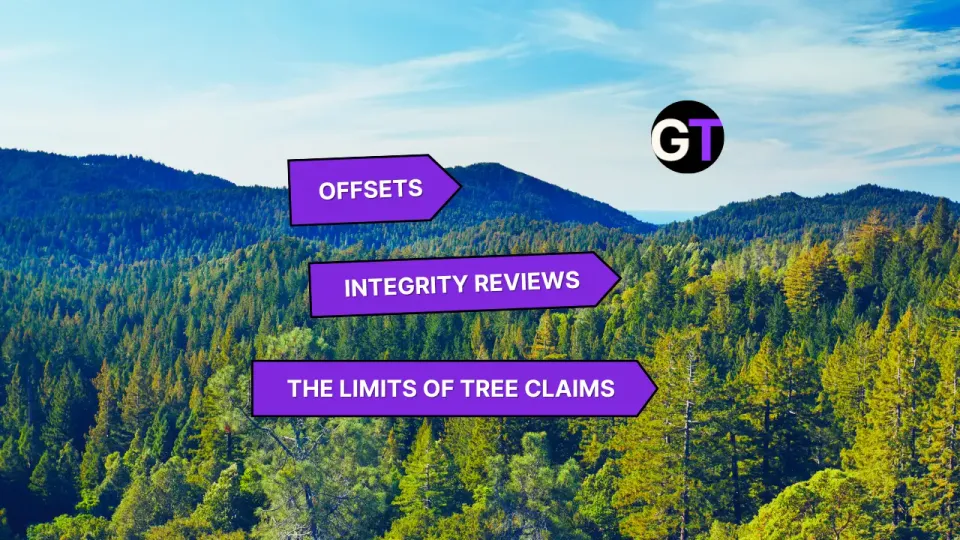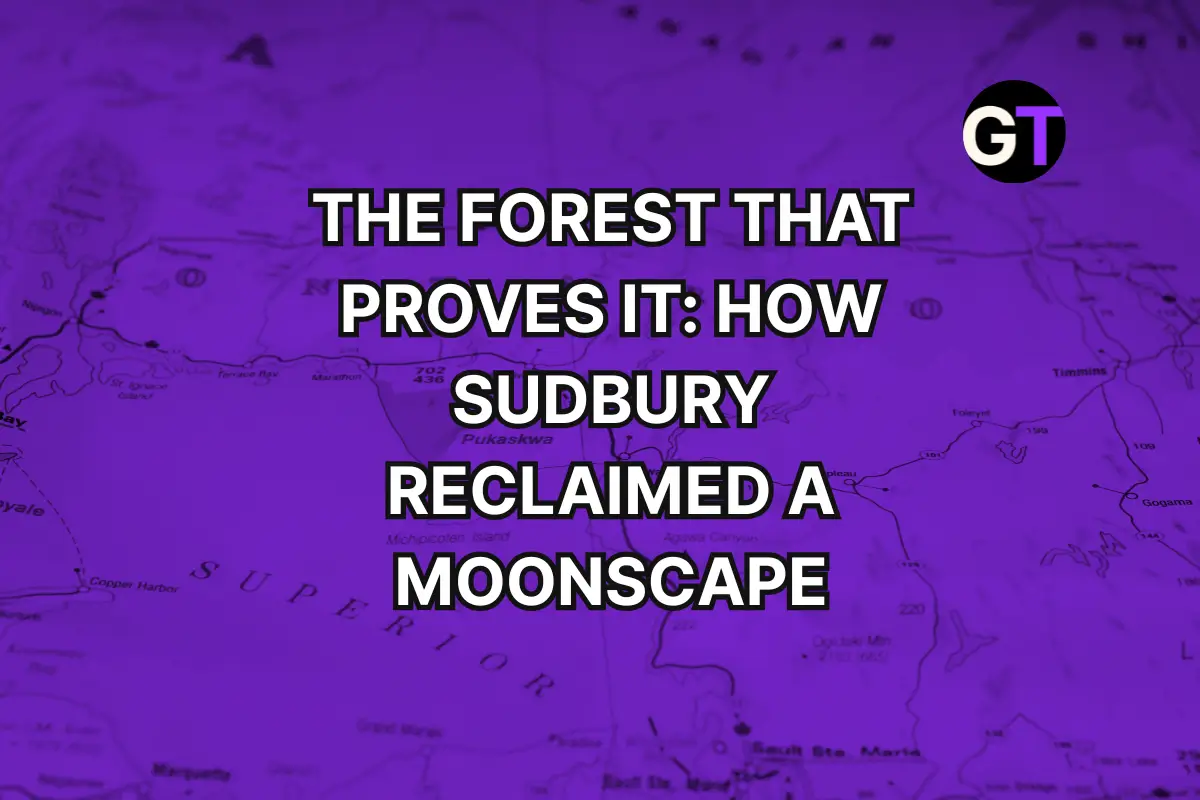AI in Africa, Trees in Minnesota, & Finance at COP30
From Minnesota to Mozambique, the money behind reforestation is shifting—AI, credibility, and community are leading the way.

Could AI Unlock Finance for Nature Restoration?
Restoring the planet’s degraded lands is one of the biggest challenges of our time—and right now, the biggest bottleneck isn’t ambition, it’s money. Despite governments pledging to restore a billion hectares by 2030, funding for nature lags far behind—especially in places like Africa where billions are needed for reforestation, agroforestry, and mangrove revival. Enter AI-powered restoration finance. With tools like Meta and WRI’s open-source DINOv3 model, it's alleged that satellites can now count trees from space with uncanny accuracy, cutting verification costs by 97% and showing investors which projects actually work. That data could reshape markets: turning sapling survival into bankable assets, rewarding local communities (who are statistically the best at restoring land), and blending public, private, and philanthropic capital into scalable finance. The pitch is simple but game-changing—if we can track every tree, we can finally pay for every tree.
💬 Could AI turn nature restoration from a feel-good pledge into an investable reality? Can satellite data replace in-situ ground truthing?
👉👉 Read more from the WRI
Big Ambitions, Safe Bets: The current state of natural capital investment
Institutional investors are finally talking “natural capital,” but when it comes to writing checks, most are sticking to old standbys: timberland and farmland. A review of 12 major funds managing $6.1 trillion found just 0.2% of assets explicitly going into nature-based solutions — with nearly all of it locked into working lands, not riskier plays like biodiversity credits. Familiarity offers steady cashflows, but it also carries risks of land grabs, displacement, and a thin pipeline of investable, high-integrity projects. Until markets mature with better data, pricing, and safeguards, pensions are hedging their climate bets by playing it safe.
💬 Can natural capital ever move from niche side play to mainstream asset class — or will investors stay stuck in the comfort zone of trees and fields?
👉👉 Read more via Impact Entrepreneur
What We Learned from BIRA Project Submissions: Inside Xilva’s Red Flag Review
Xilva’s first round of Red Flag Reviews under the BIRA program pulled back the curtain on what makes or breaks Nature-based Solutions (NbS) projects. The weak spots were familiar: muddled theories of change, shaky land tenure, and superficial community ties. But the strongest projects told a different story — clear problem–solution–impact logic, trusted partnerships with Indigenous and local communities, diversified revenue streams, and transparent land strategies. The takeaway? In a fast-growing NbS market, avoiding red flags isn’t enough. Credibility comes from clarity, community, and durability — the foundations of investable, lasting impact.
💬 Can tools like red flag reviews not only build trusted pipelines of NbS projects, but also pave the way toward a unified framework for what “investment-ready” really means?
👉👉 Read the full article in Xilva
Biodiversity Credits: 10 Recommendations for Launching the Market in Southeast Asia
Can Southeast Asia turn biodiversity credits from buzzword to bankable reality? A new report commissioned by the UK FCDO lays out 10 recommendations, from agreeing on a single unit of biodiversity gain and embedding stakeholder benefits, to linking biodiversity outcomes with carbon projects and piloting compliance markets. The throughline is clear: credibility, comparability, and community benefits will make or break this emerging market. But while the blueprint is ambitious, success hinges on governments, investors, and local communities actually pulling in the same direction.
💬 With so many moving parts, can Southeast Asia pioneer a biodiversity credit market that’s both investable and equitable—or will fragmentation stall momentum before it starts?
👉👉 Read the full article in RePlanet
What You Need to Know About Nature Finance Ahead of COP30
COP30 in the Amazon is less policy wonkery, more power shift: Brazil’s leading with jurisdictional credits tied to state policy and community consultations, performance‑based payouts, and a proposed Tropical Forests Forever Facility that rewards keeping forests intact—while restoration moves from pilots to investable portfolios like the Brazil Restoration & Bioeconomy coalition. For corporates under SBTN/TNFD pressure, the bar is rising from token offsets to scalable, transparent, community‑aligned finance that links supply chains to landscape outcomes.
💬 Can companies pivot from project‑by‑project offsets to jurisdiction‑scale, performance‑paid nature finance before COP30 resets expectations?
👉👉 Read the full article in Trellis
Minnesota Pays You to Plant a Forest in Your Backyard (Well, 3 Acres of It)
Minnesota’s Department of Natural Resources is dangling cash to turn empty fields back into forests. Through its Field to Forest Cost-Share Program, landowners who plant at least three acres of trees can snag up to 75% reimbursement on planting costs plus a $500-per-acre bonus once seedlings are in the ground. The goal? To chip away at the state’s 15 million–acre forest loss since European settlement and bring back the soil, water, wildlife, and resilience those trees once delivered. Beyond the ecological payoff, landowners stand to gain long-term perks too—like higher property values, future timber revenue, and even new recreation spaces. Applications are open until Dec. 1, with plantings set to kick off in spring 2026.
💬 Is $500 an acre enough to jumpstart tree planting in Minnesota?
👉👉 Read more via Minnesota DNR
Cutting Costs, Not Forests: Pine Replanting Gets a Makeover
In Mississippi’s pine country, landowners facing inflation and sagging timber prices are rethinking how to get the most trees for their buck. Forestry specialists at Mississippi State University say the answer isn’t more seedlings, but fewer—planted smartly in rectangular grids to slash site prep costs, delay thinnings, and produce higher-value timber down the line. Add in cheaper site prep options like prescribed fire or targeted herbicide, plus a buffet of tax credits and deductions (hello, $10,000 federal write-offs and Mississippi’s unique state credit), and suddenly pine reforestation looks a lot less like financial quicksand. Bonus: fewer trees per acre also means better wildlife habitat and healthier understories.
💬 With smarter spacing and smarter spending, could Southern pine forests finally deliver both profits and resilience?
👉👉 Read more via MSU Extension
Forests at the Heart of Sustainable Development
The European Investment Bank’s report spells it out: forests aren’t just scenic wallpaper for eco-tourism brochures—they’re hardcore infrastructure. They regulate water, filter air, lock away carbon, fuel rural economies, and safeguard biodiversity, all while employing millions. Yet despite providing trillions in value, they remain criminally undervalued in global finance. The fix? Rethink forests as central to climate, biodiversity, and development goals, not an afterthought. That means unleashing smarter finance—green bonds, blended capital, public-private deals—and political will. Because without investment now, we’re basically chainsawing the very foundation of our economies and climate future.
💬 Can finance finally stop treating forests like background props and start funding them like the life support system they are?
👉👉 Read more via EIB

Edited by Chris Harris

This work is licensed under a
Creative Commons Attribution 4.0 International License.





